Impactful skill development is all about imbibing quality while striving for scale. This message comes clearly in the Skill Story of Tata STRIVE, as Anita Rajan, COO, Tata STRIVE and VP, Tata Sustainability Group, takes us through the journey of the company. Let’s read on to know more about how the legacy of Tata is built into every aspect of their skill development courses through innovative models that focus on high quality and replicable standards.
The beginnings
Tata STRIVE is the CSR initiative of the Tata group but Tata companies have been into skill development long before it became a national agenda. It is a part of the Tata DNA to work with the community. We have heeded the urgency for skill development with leaders like our Chairman Mr. Cyrus Mistry and Mr. Ramadorai who are engaged at the national level with the skills movement. I had the privilege of working closely with Mr Ramadorai for the last 14 years.
Hence, there was an increase in sensitivity to this national challenge and it was felt that the Tata group should do something of larger consequence and should do it together with all the Tata companies leveraging their synergies. Amongst the group companies several are leaders in their sectors and each company has got its domain expertise in their own areas of business, this is in addition to their community connect. So, leveraging all these unique strengths Tata STRIVE was born as a group CSR initiative.
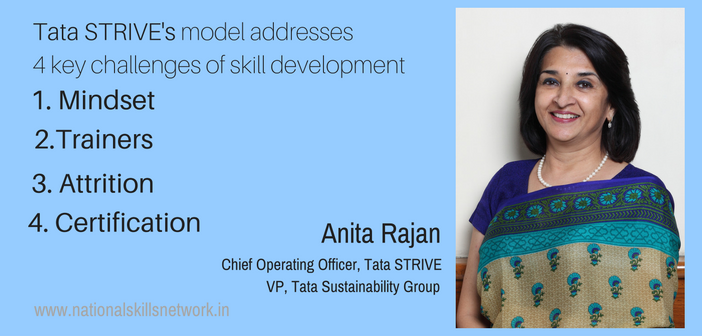 Our model
Our model
We are just 1.9 years old; we had the benefit of seeing what was happening in skill development across the country for last 5 – 6 years. We have seen this ecosystem as it developed. We began to identify and understand the challenges faced by training partners and we developed a model that would address some of these challenges. Let’s look at four of them.
Mindset
When youth with limited exposure, or from rural areas , move into a more formal, urban or professional environment they experience a huge cultural shift! We realized that we need to put in huge efforts in transforming the mindset of young people, with softer aspects like the positive attitude to work, the willingness to work hard, the right value system, being punctual at work and so on. These things are absolutely necessary and are basic to bringing in transformational behavior and cultural shift. So, we give primary importance to life skills and our Youth Development Program was born out of this challenge.
Trainers
For effective youth development, your faculty needs to be a coach, and be able to integrate the technical skills with people skills while delivering training.
Today’s youth are different , you can’t use the top down approach of pushing knowledge down people’s throats and then expecting them to deliver. They need to be spoken at a more equal level; you need to be their friend philosopher and guide. We also saw that not too many people were really investing in faculty training even though there was a lot of talk about quality. So from that idea was born a powerful program called Empowerment and Coaching for facilitators as a response to the challenge of quality faculty . We consider this as the core to maintaining the quality of outcomes.
Attrition
We reflected upon the processes of onboarding youth, training and placement. For example, if after investing time and resources in training the candidates, they drop out after 3 or 4 months, it means that there’s been a mismatch in setting and meeting expectations. Hence, we realized that along with our youth development module, we should pay attention to individual needs for better retention. The key challenge is to match the interests of youth with the jobs. We reflected on how to link the interests and aspirations with the jobs.
So, it meant, proactively identify their interests, find out if they are carved out for a particular job role and align their interests with training and jobs. This needed a bit of process innovation and we developed the ‘interest inventory’ a simple gamified app that youth play which uses their responses to generate a code that indicates their likely interest. The principle behind this is the Holland Codes. This process is standardized and we use it to screen large numbers of youth and are able to understand their individual identities and choices.
Certification
We realized that certificates awarded to the candidates should truly represent the competencies acquired else the employers may not trust the real value of certification. So, going by our brand and the values we believe in, we had to be very careful about who we certify, and what competencies should be demonstrated as a result. Towards this we strengthened our assessment making it both formative and summative, and digitized the evaluation where possible. The certificate itself is a secure tamper proof, QR coded document.
We see ourselves as enablers of the ecosystem, partners of youth in their journey , of securing livelihoods. By livelihood we mean e a job or entrepreneurship opportunity or community enterprise. This journey towards livelihoods requires personal and professional development for which we have developed several innovations in the value chain. These innovations include special on boarding processes, standardized content, delivery methodologies which are pedagogically rich, objective assessments using technology.
Our focus is on enabling a model that works smoothly, is scalable and replicable beginning with mobilization, training, assessments, certification and placement.
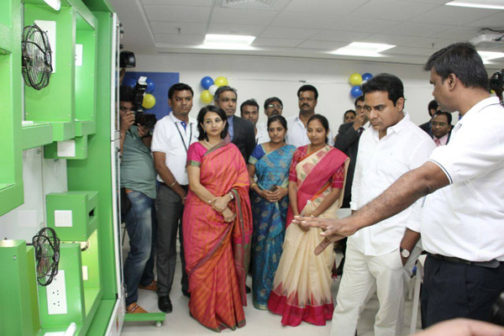
Key differentiators of the model
One of the key differentiators is that the entire process stands on rock solid foundation of the technology platform. We believe that technology is a great enabler in three ways. First, it gives us the authenticity through real time information, second, it make the program replicable (through standardisation) and third, it help in achieving the scale (through collaboration).
Our model is highly collaborative. We have created our own training centers and but we are going to scale up through partnership, we will partner with other like minded people and organisations who are equally committed to adherence to quality in all aspects of training for holistic youth development. We partner with the government, corporates and NGOs through flexible options on the basis of common agendas.
Standards compliance
We align with national standards of QP-NOS but what we actually deliver goes much beyond the minimum threshold level. The value add is much more. We are already partners with 5 Sector Skill Councils (SSC) and we’ve applied for NSDC non-funded affiliation. .
Mobilising and inspiring youth
There are many negative perceptions associated with vocational education and many entry level jobs are looked down upon. So, our initial conversations with the youth are about the reality of the environment. We have to inspire youth to other pathways for career success beyond becoming the stereotype engineer or a doctor. We tell them about multiple paths to get to the top and how vocational path is most accessible. They may not get their dream job as their first job, but it could definitely be their third or fourth job if they do well. We use motivational films with real life stories of people who made it big with sheer hard work and commitment by taking a skill development course.
These short films are about real people, for instance there’s one about an AC technician, to create the film we worked with VOLTAS. It’s a live example of somebody who actually started very small in life by taking up a vocational course. The film shows how he got started and grew professionally, got a opportunity to go to abroad to work on a project, earned enough to build a house and own a vehicle. We talk to the parents by inviting them to the centers before we work on the interests of the youth through our interest inventory. We also bring Tata employees from banking, retail and other sectors to interact with youth, they narrate their success stories. We’ve have found that initial convincing is always the biggest challenge. But once the youth come to our program, and they experience the learning process and the commitment of trainers, they stay on. We’ve seen some success in this way, that gives us the confidence in our model.
Regarding placements, we tie up with industry not necessarily Tata companies. We facilitate placements for each and every one of them however the choice to take them up remains the students.
Positive impact
Our goal is to impact through quality. Unless you get quality there is no use investing in skill development. And, we are changing this debate into not one of numbers but numbers with quality. So our model is about quality and scale. Scalability comes from the solid model we’ve created and the plan to share it with others. So each person builds a little scale, together all of us collaborate, hold hands and you get the national scale!
Another focus area for us is to impact the faculty through investments in training and development. Right now we don’t have formal programs like B.Ed in vocational education. Through Empowerment Coaching, we have taken the first step towards building a training program for vocational education faculty. This will also create a clear professional growth path for somebody who chooses to become a vocational trainer.
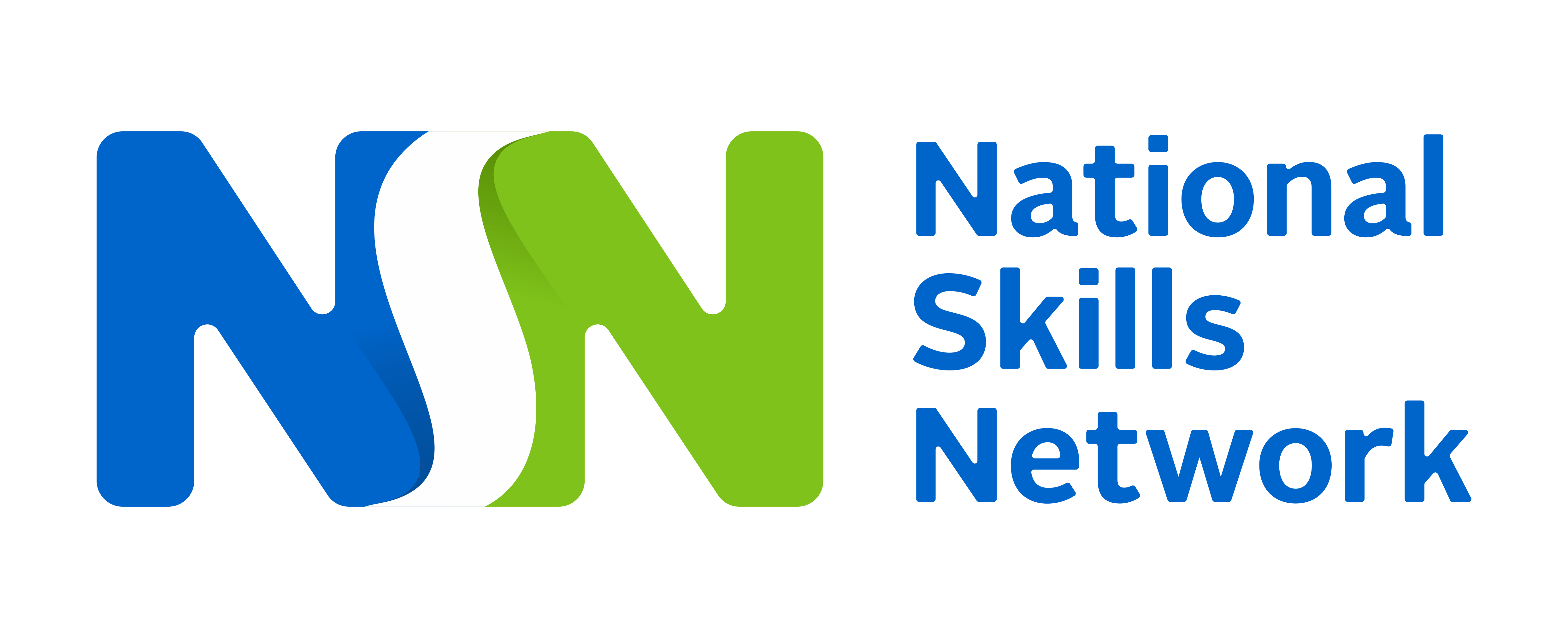




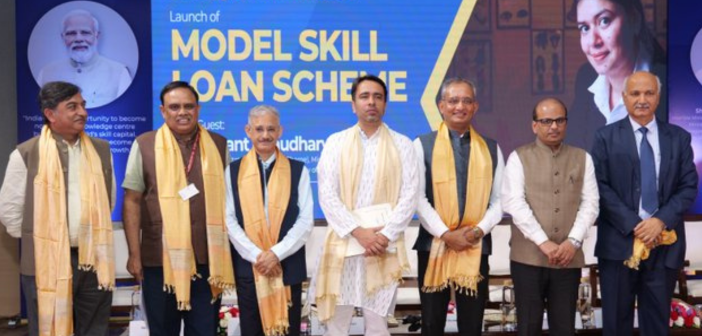


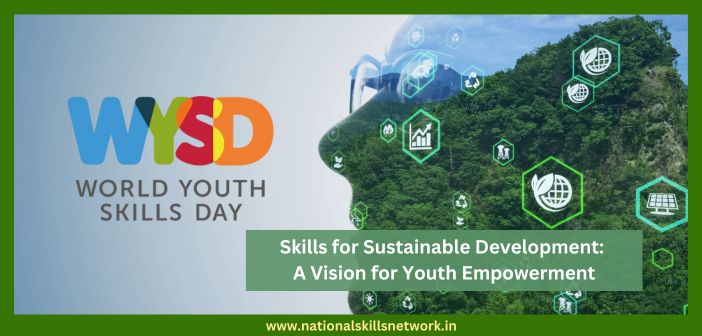

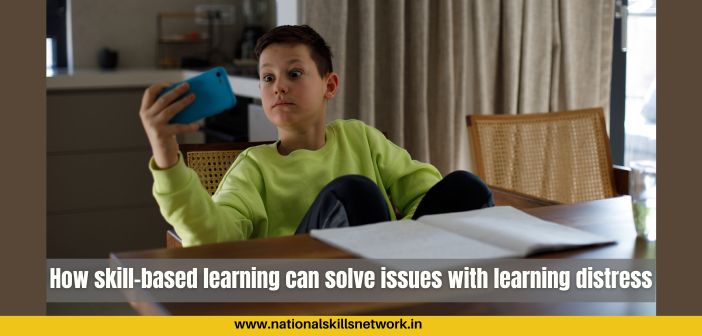
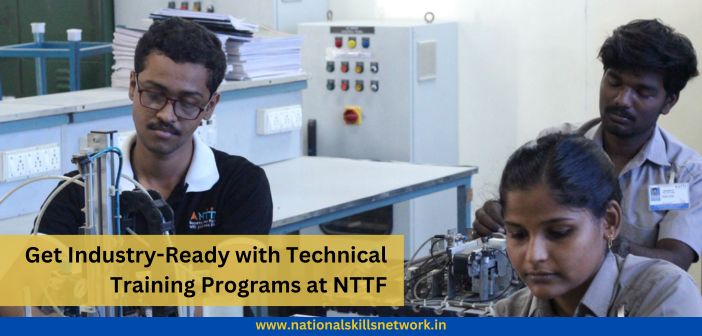

tata Strives skills good training by centre all hotels taj tata Strives groups thank everything trained by gide hotels because one resion students traini books provided tata Strivesskills all traditional training.
I am a resident of Delhi, associated with a couple of Skill /Training providers accredited to NSDC, with a host of Verticals from the very Basic Agri, Food Processing, Furniture Fitting to Industry/Shop Floor fields like Auto, Aero, Capital Goods, Hospitality, Strategic Mfg, etc. It’s my belief – pardon me, I am an old man- that this Skill landscape is so huge that it could benefit immensely from collaborative attempts to tap the potential from among Millions of youth and possibly make some dent in the dream of ” Make-in – India” slogan become more meaningful. I was therefore wondering if there could be a dialog with your organisation given its vast reach, expertise to derive some synergy. I would be grateful for a positive response.